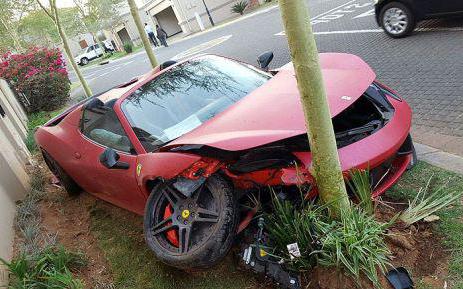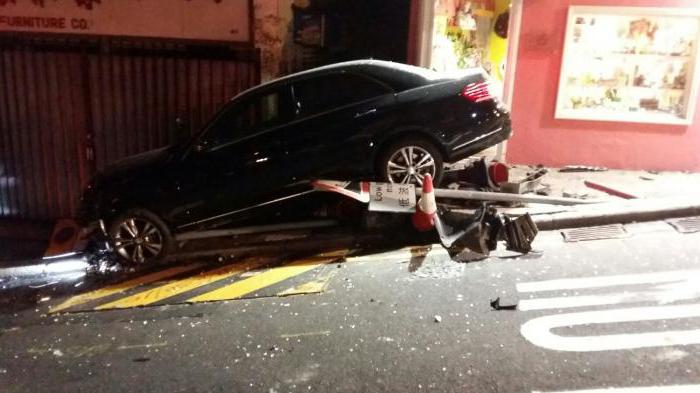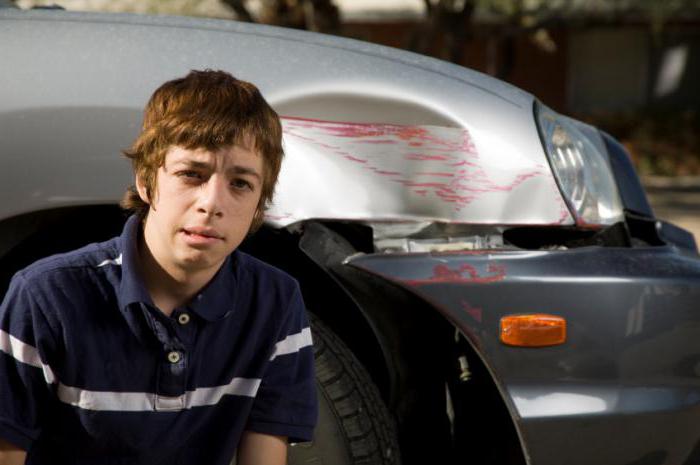Traffic accidents every year, alas, only gets bigger. A frequent type of accident among others is a collision with an obstacle. The design of an accident should be correct. Then it will be the key to success in obtaining compensation.

The concept of "collision with an obstacle"
The design of an accident in different types of accident has its own nuances. To understand the intricacies of the species we are considering, we will study its definition. Hitting an obstacle means an incident when the vehicle hit or hit an object in a stationary state. Most often, drivers run into the following objects:
- poles by the road;
- building materials;
- bridge supports;
- fencing;
- buildings along the road;
- abandoned ajar car doors.
The degree of danger of this act is similar to a head-on collision of cars. It is also possible death. The risk of death of the driver and passengers will increase if they are not wearing seat belts.

The reasons
The main reasons due to which the driver runs into an obstacle are the following.
- Violation of traffic rules, especially in terms of exceeding the set speed, driving while intoxicated, not using seat belts, driving with a faulty car.
- Eating or smoking while driving.
- Inattention.
- Overwork.
- The sound of loud music.
- Bad weather.
Minor event
If the accident or collision with an obstacle was almost insignificant, then there will be no liability. The criterion is taken not from nowhere, but is determined, according to the norms of the law (it is regulated by the Resolution of the Plenum of the Supreme Court of the Russian Federation of 2005).
Insignificant are acts that, although they contain signs of an offense, but do not constitute a significant violation of social relations.

Administrative responsibility
If there are all signs of an offense, the person who drove the vehicle may be held liable. Despite the fact that there is no specific article providing for punishment under the Code of Administrative Offenses, the violator may be waited for a fine for general non-compliance with the Rules, resulting in a collision.
For example, if the operation of the car was prohibited, then the offender will face one fine. When not using seat belts is another. When drunk driving - the third, and so on.

Criminal liability
In some cases, criminal liability may be provided for the deed. It occurs if the obstacle that the driver ran into is a high public danger.
As a rule, in this case, the crime leads to victims: dead or injured.
Hitting an obstacle while stationary can be a violation of the rules. Two years threatens the offender if the offense was committed by negligence, but entailed harm to health, for example, led to loss of vision, hearing, injury and the like. Well, if the driver was also drunk, then his term in prison will be increased to 4 years.
If the incident ends in death, then imprisonment will last up to 5 years, and in the case of drunk driving - up to 7. In case of violation of the Rules, resulting in the death of two or more people, the offender will be punished with imprisonment of up to 7 years, and if he was drunk - up to 9 years.
In addition to this punishment, it will not be possible to drive a car for up to 3 years if the crime was qualified as a collision with an obstacle.
Making an accident with a traffic police officer

An incident can be recorded with or without a traffic police officer. In the first case, the inspector, having arrived at the scene of the incident, gets acquainted with the circumstances that led to the violation. In doing so, it collects the following information:
- learns the surname, name, patronymic of the driver, as well as his address and telephone number;
- listens to the explanations of the culprit, other participants and eyewitnesses;
- ascertains the type of traffic accident;
- fixes all injuries sustained by the vehicle when an obstacle was hit.
An accident is issued by an employee by compiling and collecting the following documents:
- Accident pattern. This is the first document that is recorded at the scene. It displays accurate measurements of the position of the car, objects of impact, the direction of the braking distance, a description of objects located nearby with an indication of their size, a graphic image, a description of what limited the visibility of the driver, objects located perpendicularly and parallel to the axis of the road with an indication of their size, point of the car namely wheel hubs and towing hooks.
- Explanations of the driver, passengers and eyewitnesses. In them they describe everything that they saw when the accident happened, or did not see and could not see.
- Also, an employee fills out reference, which he gives out to drivers, although it may be given with a delay. This document displays information about the time of the incident, participants, state car numbers, victims and vehicle damage.
- Protocol inspection of the scene. It must necessarily reflect the area where the collision was made with the nearest streets. The shape and size of the road are also signed. The inspector shall report, if any. road marking signs and traffic lights, as well as signs. The protocol should contain information about the path for pedestrians, trees, garages, kiosks and other objects nearby. The road surface, pits, mounds and bumps are described. The weather and conditions of visibility at the time of inspection should also be reflected in the protocol. It clearly indicates the time of inspection, all measurements relevant to investigating a collision with an obstacle, objects seized as material evidence, tread prints, shooting a DVR or security camera, all statements from road accident participants and eyewitnesses.
Peculiarities of registration of road accidents when hitting an obstacle are compulsory inspection and drawing up a protocol on the technical condition of the car. It should be described in detail whether there were malfunctions in which the driver did not have the right to drive the vehicle, because maybe this was the reason that there was a collision with an obstacle (a comprehensive insurance accident of this kind may not be paid in such case). All deformations are described in the most detailed way, the area in which the elements of the car are scattered, specific types of damage are recorded, indicating the size and exact position.

The sobriety control protocol is also being completed. If necessary, the inspector takes the driver to the place of the examination. Then, on its basis, the narcologist completes the protocol on the driver who hit the obstacle.
Features of the design of an accident without an inspector
If two people were injured in the incident, but they have no mutual claims regarding damage, you can not call the traffic police inspector. Although there was a collision with an obstacle, registration of an accident (hull too) is not required. The main thing is that drivers must be insured for civil liability under compulsory motor third-party liability insurance.
But if the participant is one driver, he must call a traffic police officer.
When the accident is completed on its own, the driver fills out a form traffic accident notices and immediately takes him to an insurance company.The form should reflect the circumstances of the accident, the scheme, as well as the size and nature of the damage.
Thus, the driver fixes the accident on their own.
Of course, it is better to resort to the help of an inspector, since he will do this work more fully and professionally.
Conclusion

We examined one of the types of accidents - hitting an obstacle. Registration of an accident with and without a traffic police (STSI), which is typical, is possible in this case. It’s good when road accidents cost no casualties. Better yet, when they do not happen at all. You will be at much lower risk on the road if you do not break the rules.
